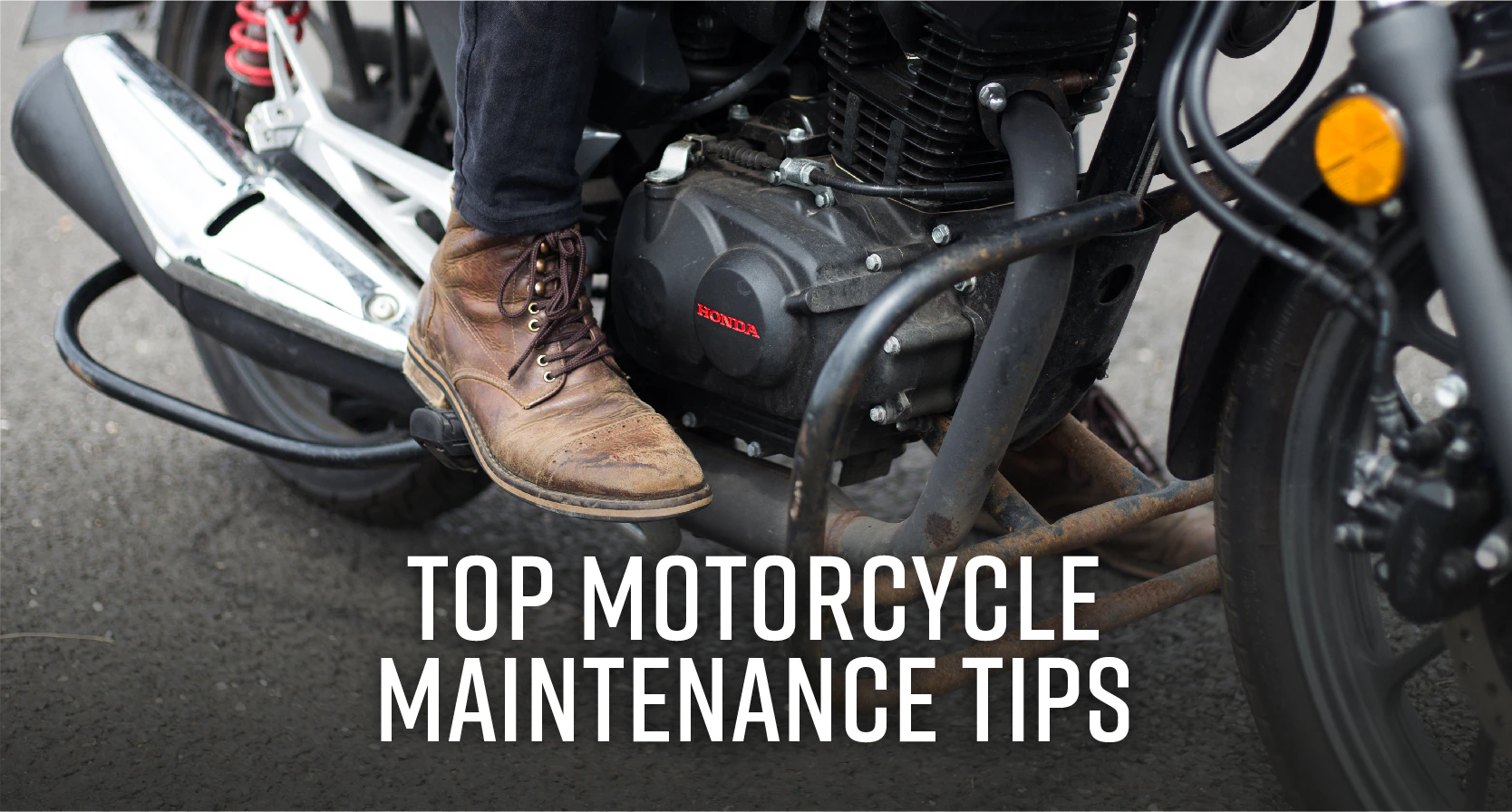back to the blog
Top Motorcycle Maintenance Tips

Tom Baker · July 26, 2018
Motorcycle Maintenance: Find out the top tips and best practices for maintaining your motorcycle or scooter.

Whether you're a regular rider or dusting off your bike after a long time to get back into riding, we’ve put together few top tips to make sure your bike is in tip top condition when you next use it. It’s always a good idea to check over your motorcycle before you get on, regardless if you’re a seasoned rider or just getting into it. So take a browse through this guide and see how best to prepare!
Brakes
Your brakes are in top working condition if the wheels of your motorcycle respond to any force applied on the brake pedal or lever. To test it out, squeeze the front brake lever and press the rear brake pedal. They should respond by bringing the wheels of your bike to a gradual stop. Check if your brake fluid levels are at the right levels too. This can be done by looking into the sight glass on the brake cylinder. The brake fluid should also be changed if it displays a cloudy grey colour or darker. If your brake pad or disc shows signs of wear and tear, it should also be changed. Any squeaking or noise coming from the breaks means there’s usually an issue and worth having a trained mechanic check them over.
Oil and Coolant
Change your engine oil roughly every 3,700 miles or through long periods of disuse. This is done as engine oils can contain acids that are best removed and to ensure that oil levels are at an optimum. Changing your motorcycle oil usually depends on how often and how far you ride your motorcycle. Your motorcycle’s coolant must also be checked if your machine is liquid cooled. Ensure that coolant levels are both at their optimum and are clean. Dirty coolants can clog up the system. If you are unsure if your bike is liquid or air cooled learn the basics in the video below. In addition to that, you’ll also benefit from cleaning and lubricating the bike chains regularly. Be careful to not over lubricate the chains as these can attract access dirt, wipe off any excess oil you apply.
Tires
Regularly check the pressure on your motorcycle’s tires as these drop over the period of storage or naturally after long periods of riding. It’s a good idea before every ride to check that the wheels feel sufficiently pumped up. Just because tires look or feel inflated doesn't necessarily mean they are! For an accurate reading, use a pressure gauge and only check the tire pressures when they are cool and not immediately after riding. Your owner’s manual should give you accurate guidelines and direction on the correct pressure for your motorcycle tires.
Electrics
Check that all your motorcycle or scooter lights are working properly. Long periods of storage or a winter of wet riding may cause faulty bulbs or fuses during this time. These include your motorcycle’s brake lights - check both your brake levers/pedal powers your brake lights. Check your tail-lights, headlights and indicators to make sure they work or replace as necessary. In addition to that, make sure that the brake, throttle and clutch cables are fully functioning. The core electronics such as indicators and brake lights should always be checked that they are working before each ride.
Cleaning
Washing your bike is the best way of maintaining it and will also probably give you the best chance of spotting anything that is mechanically wrong. Rinse the bike with warm water and then soap it down with plenty of hot water. Use a decent quantity of bike soap, however take caution to not use washing-up liquid as some can be corrosive. Use a clean sponge to clean the whole bike. Do bodywork and screen first, to avoid scratches from dirt picked up by the cloth or sponge. Rinse off with plenty of fresh water.




